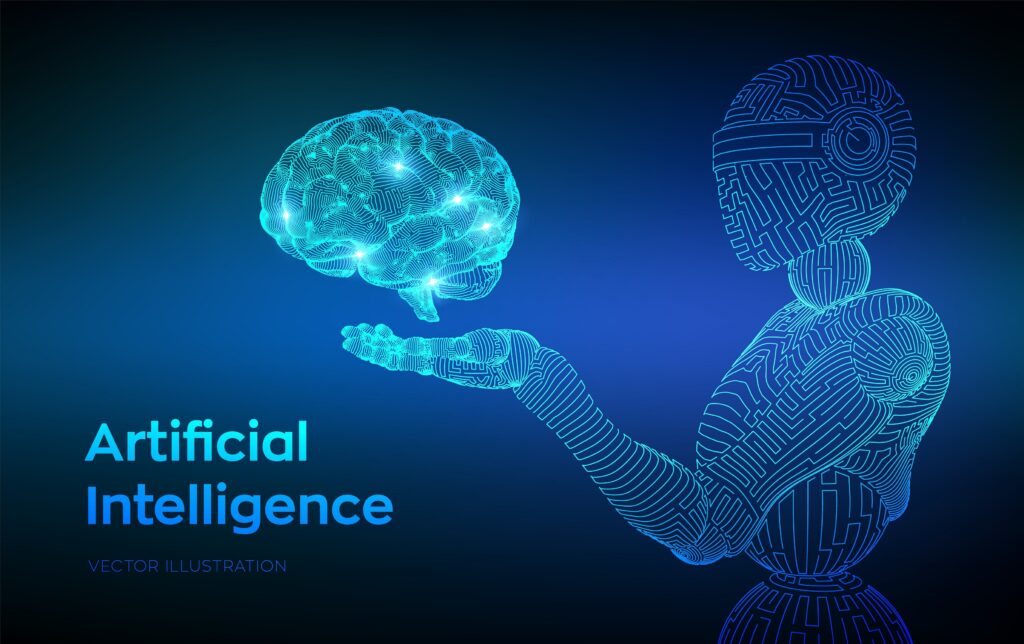
How artificial intelligence is used in PR
Public Relations
Posted 13 Oct 2020
Artificial intelligence (AI) is changing our daily lives a lot – in private, but also in the business environment. Even if you don’t expect it on a first glance, artificial intelligence is already widely used in PR. From supporting activities such as data analysis to autonomous tasks in data journalism, AI is used in the PR industry in many different ways. But, what impact does this have on the industry?
What are the possible applications of AI in the public relations sector? And why can artificial intelligence in many aspects not be compared to the expertise of human PR consultants? Read on to find out.
Artificial intelligence describes algorithms, programs, or systems that can simulate human intelligence. The most important characteristics of artificial intelligence are learning and using new knowledge. Artificial intelligence can have different forms, for example, in the field of image and speech recognition, translation programs, or the displaying of relevant search results.
People often assume that sophisticated algorithms with AI capabilities are only used in highly developed industrial companies and will only be implemented in other industries in the far future. However, this assumption is incorrect, since artificial intelligence is currently part of the daily work in many areas. And of course, AI has reached the PR sector as well. These application possibilities show that artificial intelligence is already part of the daily business in PR.
AI assistants are doing important work in data analysis. In the PR sector, such programs aid us in collecting and classifying large amounts of data. Data analysis performed by AI helps to identify trends in PR more quickly and easily in order to develop the most up-to-date content and to react more quickly to urgent issues.
One example is the collaboration between the world’s largest network of independent PR agencies, the Worldcom Public Relations Group, and HBI. With the help of the artificial intelligence Polly, more than 60,000 social media accounts of executives worldwide were tracked and their online postings were analyzed. Based on this, a broad insight into the mindset of executives worldwide was provided and important trends were identified.
Get more insights into Polly’s technology here.
Not every type of journalism involves storytelling and creative content. Data journalism is designed to provide quantitative data on information that is relevant to the public. The information is presented clearly and objectively, without giving an opinion or a deeper view of it. This type of journalism has been adopted by artificial intelligence – like the Crimemap of the German city, Stuttgart. This is a project by the town’s local newspapers, Stuttgarter Nachrichten and Stuttgarter Zeitung. It publishes daily police reports, such as accidents or other crimes, via a database. The data from the Crimemap can be viewed in retrospect until 2014.

If you are often involved in content marketing or journalism, you are faced with the challenge of constantly generating new, relevant, and high-quality content for your readers. Artificial intelligence assists in finding relevant topics for your target group. For example, with the help of the AI Polly, the social media profiles of executives were analyzed. The collected data was broken down into categories that managers were particularly interested in.
A different way of generating new content shows artificial intelligence Keywee. Keywee is designed to analyze content on your website and find out which target group is most likely to interact with this type of content.
Both of these AI examples allow you to find out which target group in the PR sector is interested in which content in order to create future articles and blog posts more precisely.
Data-based PR is nothing unusual. Learn how to use data-driven PR for your benefit.
The different examples show that artificial intelligence is already used in many different ways in the PR sector. But, is there a possibility that PR will one day be completely based on artificial intelligence? The answer is quite simple: No. Artificial intelligence will remain as a highly functional and supportive tool, but there are tasks that even an AI cannot replace.
Artificial intelligence, as it is today, is not capable of questioning the information it receives. Data-based calculations and ratings are always answered with a yes or no. The task of questioning different possibilities and, if necessary, considering other factors that are not available to artificial intelligence, must therefore remain a task for humans.
Although artificial intelligence has already created some works of art, those were based on data that was already human-created and documented. To put it simply: AI cannot create something that has never existed before. This is something that only humans can do. It is the same with PR measures: Creative ideas cannot be generated by artificial intelligence.
Currently, intercultural skills and the necessary sensitivity cannot be provided by artificial intelligence. Beyond national borders, there are different manners and formulations that only a person with social interaction skills can handle. Especially in international projects, the flexible change of tone is essential.
The examples show that artificial intelligence already plays a major role in PR. However, at the moment, AI serves more as a supporting tool in this area, making every day work easier and saving a lot of time when handling simpler activities.
It is expected that algorithms and programs that make artificial intelligence possible will continue to make inroads into PR and journalism in the coming years and change the industry. For the PR industry, this means that the new technologies should be adopted and implemented. With their integration, it is also important that the tools are introduced efficiently and are monitored regularly as to not run into ethical issues that AI does not understand. With careful and thought-out planning, AI can be a great asset to work routines, allowing PR consultants to seamlessly continue to serve their client’s needs.
At HBI, we work with data-based insights to design our PR strategies in a trend- and market-oriented way. Find out more.
About the author
Melanie Kehl
Account Assistant at HBI Helga Bailey GmbH – International PR & MarCom

Melanie Kehl has been in charge of HBI’s internal marketing activities since 2017. As a student in the field of online marketing, she is responsible for the implementation of SEA and SEO campaigns, setting up landing pages, and writing articles.